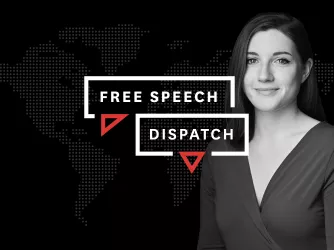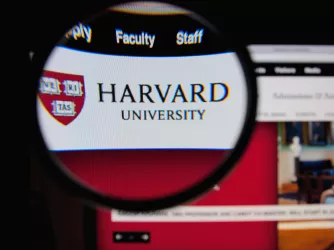Table of Contents
NRA case shows the Supreme Court must stop informal censorship

Fred Schilling / Collection of the Supreme Court of the United States
This article originally appeared in Bloomberg Law on March 18, 2024.
If the First Amendment stands for anything, it stands for the idea that a government official can’t go after you just because someone doesn’t like what you say. But that’s exactly what New York state officials did in NRA v. Vullo, a case to be argued before the US Supreme Court this term.
The Supreme Court should stop government officials in New York and nationwide from using informal means to punish speakers based on their viewpoints, no matter how unpopular.
It’s no secret that the National Rifle Association, known to most as the NRA, is controversial.
The NRA is the nation’s best-known advocate for the right to bear arms. But rather than duke it out with the NRA in the marketplace of ideas, the Superintendent of the New York State Department of Financial Services Maria Vullo allegedly took a more pernicious approach: She used the power of her position to pressure insurance companies into refusing to insure the NRA because of its advocacy and its views, according to the NRA’s claims.
After the 2018 mass school shooting in Parkland, Fla., Vullo met with executives at Lloyd’s of London to discuss her views on gun control and to tell them she believed the company’s underwriting of NRA-endorsed insurance policies raised regulatory issues, the NRA alleges. She told them Lloyd’s could “avoid liability”—but only if the company told its syndicates to stop underwriting their insurance policies, and joined her agency’s “campaign against gun groups,” according to the NRA’s brief.
Lloyd’s publicly broke ties with the NRA a few months later.
But Vullo didn’t stop there. She then allegedly issued guidance letters to all insurance companies and banks operating in the state—entities directly regulated by her agency—advising them to evaluate their business risks, “including reputational risks, that may arise from their dealings with the NRA or similar gun promotion organizations.” In other words: Think twice about the company you keep and the views they express.
Government actors at all levels have grown more creative in their efforts to evade the First Amendment. The court should take a strong stance against New York’s actions here to protect not only the NRA, but all Americans from illegal government coercion.
New York, if these facts are true, tried to circumvent the First Amendment’s ban on censorship by relying on this informal pressure campaign. But informal censorship violates the First Amendment, too. The First Amendment looks to the substance of government actions, not just the form those actions take. And while the government is free to try and convince others to adopt its ideas, it crosses a constitutional line when it attempts to coerce them, especially when it employs thinly-veiled threats of prosecution or regulatory action.
The Supreme Court should use this case to provide clear guidance on why informal actions to suppress speech subvert the rule of law. In many cases, informal censorship can be worse violations of the First Amendment, because when government officials operate behind closed doors, it’s more difficult for the public to hold them accountable.
A clearly structured test to identify informal censorship will help courts crack down on governments’ attempts to do end-runs around the First Amendment. That test should consider several indicators of unconstitutional coercion, including things like whether the official is speaking in their official capacity, whether the official makes veiled threats about potential prosecutions or lawsuit, and the official’s word choice and tone, among others.
Government actors at all levels have grown more creative in their efforts to evade the First Amendment. The court should take a strong stance against New York’s actions here to protect not only the NRA, but all Americans from illegal government coercion.
The case is National Rifle Association of America v. Vullo, U.S., No. 22-842, to be argued 3/18/24.
Recent Articles
FIRE’s award-winning Newsdesk covers the free speech news you need to stay informed.

‘I hate freedom of opinion’ meme leads to sentencing in German court

Revoking Harvard’s tax-exempt status will threaten all nonprofits

Grandpa’s advice for the new wave of American censors


